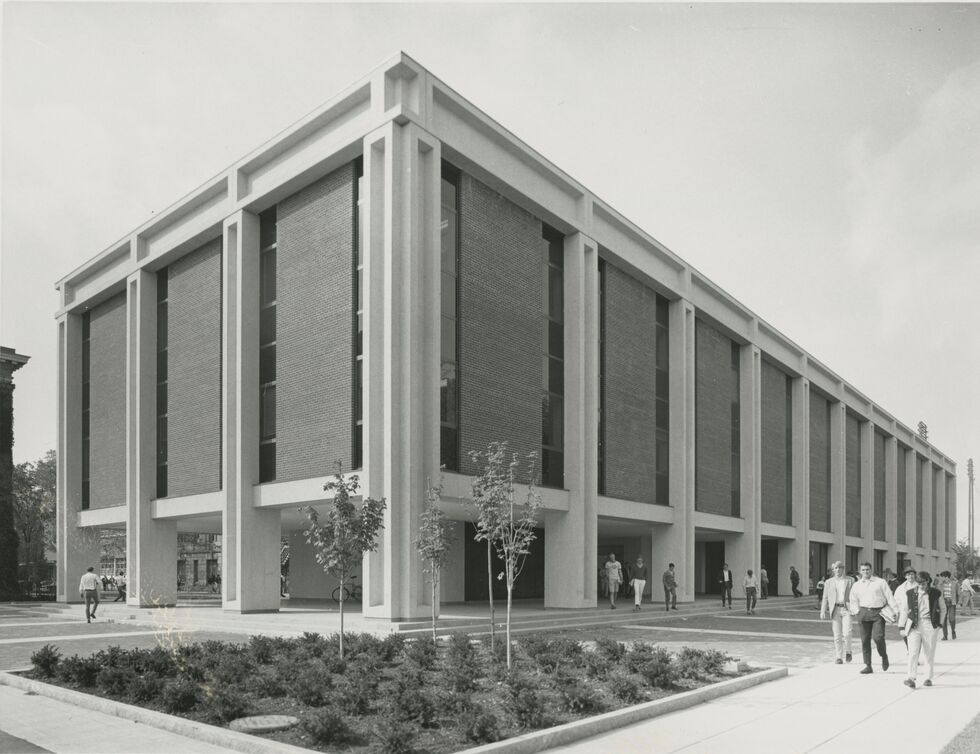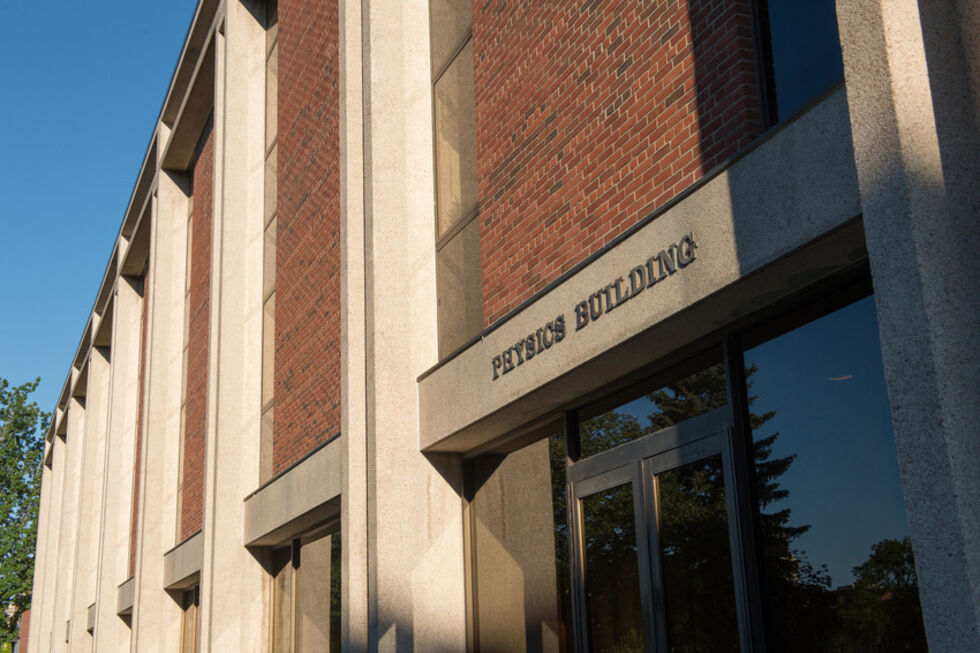Physics Building
"Physics Building" by King & King, Syracuse , 1965-1967
The Physics Building houses the physics department for both undergraduate and graduate studies at the University. It contains internationally recognized research groups in areas of astrophysics, biophysics, condensed matter, gravitational waves, and several others. The building has six stories, several of which contain experimental research areas primarily for materials research. These include ten radio-frequency shielded rooms, a modern machine shop, a liquid nitrogen machine, glass-blowing equipment, and several computer terminals. The first floor houses the Physics Clinic, a help center and study lounge staffed by teaching assistants. This resource is available throughout the academic year and undergrads are encouraged to utilize the Physics Clinic for assistance with their studies.
Interestingly, the old School of Journalism building was demolished to make room for this building.
The Physics Building is four stories tall and has two stories below ground. The first floor contains the 307-seat Stolkin Auditorium, a gift from Ralph E. Stolkin, a friend of the University and parent of a student.
The Physics department was originally housed in Steele Hall prior to the construction of the Physics Building. When constructing the new building, Syracuse University consulted several renowned sources to ensure the Physics Building was built to top-notch standards. These included the Checklist for Physics Buildings, a project of the American Institute of Physics; Physics Buildings Today, A Supplement to Modern Physics Buildings: Design and Functon; and, New Spaces for Learning: designing college facilities to utilize instructional aids and media. When making the move from Steele Hall, it took several days and an allocation of funds from the University to move all equipment to the Physics Building, including machine tools, laboratory equipment, furniture and office supplies. Interestingly, when still housed in Steele Hall, Syracuse University provided training in physics to thousands of Army and Air Force personnel during World War II.
SU University Archives; SU Photo and Imaging Archive.


